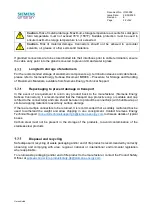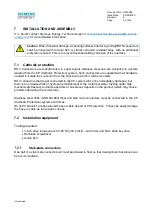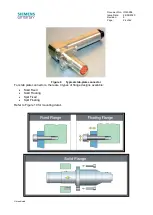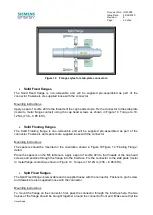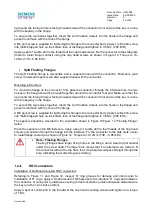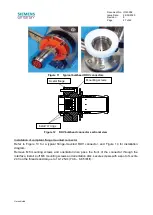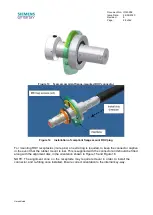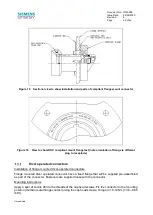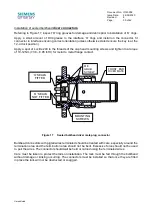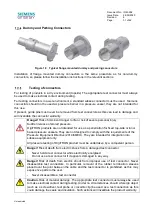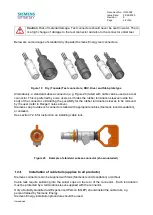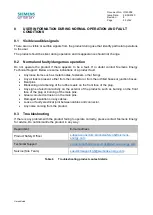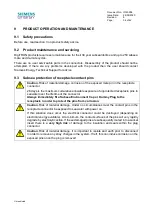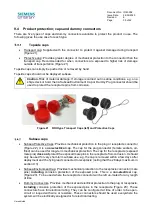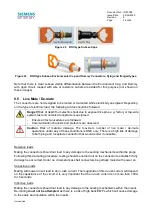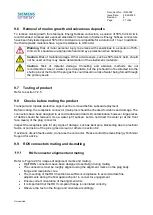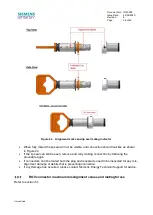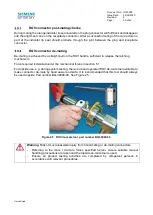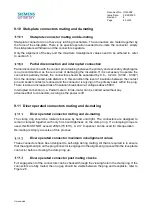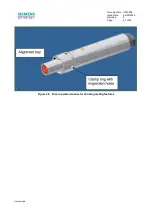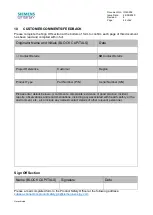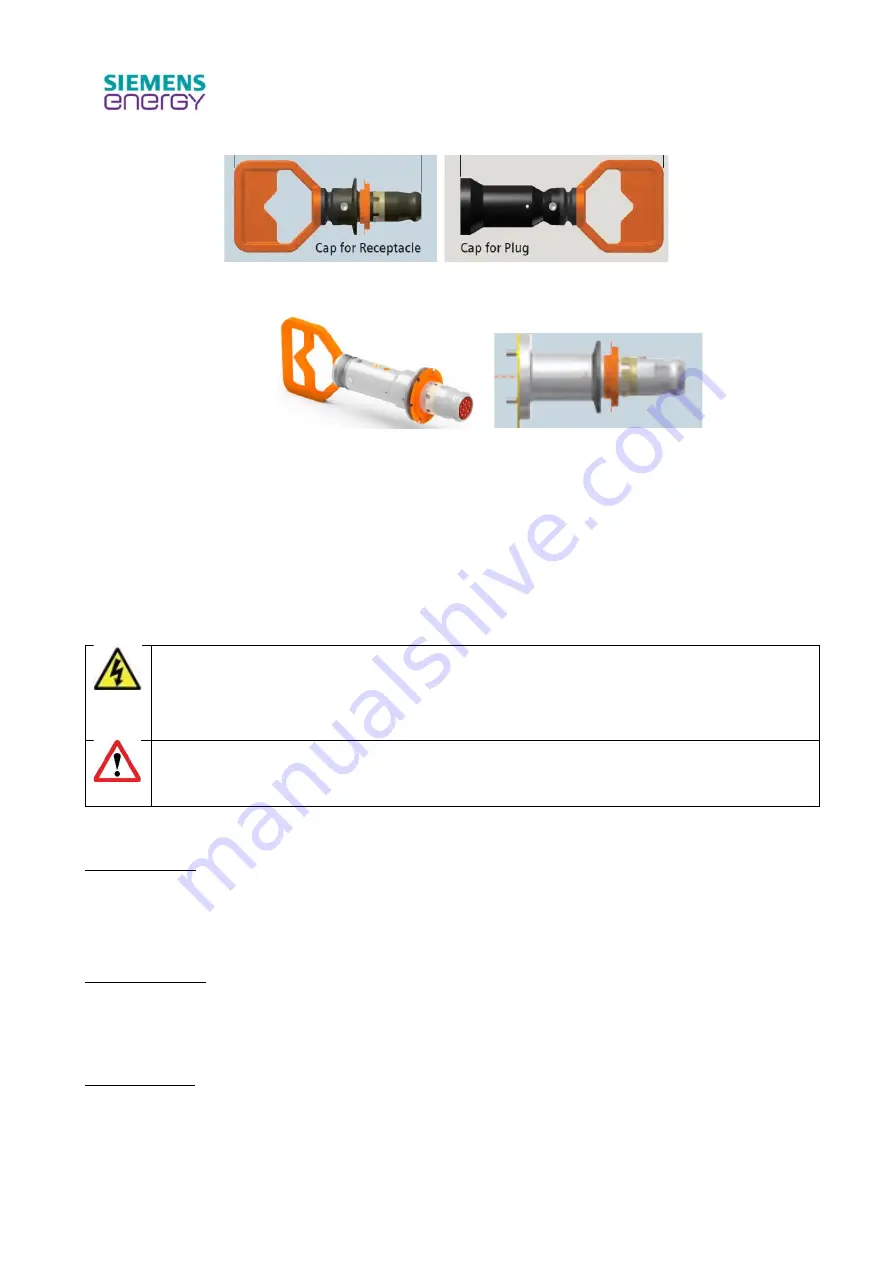
Document No: IOM-002
Issue Date:
24/09/2020
Revision:
6
Page:
36 of 42
Unrestricted
Figure 22
ROV-type Subsea Caps
Figure 23
ROV-type Subsea Environmental Cap and Dummy Connectors, flying and flanged types.
Note that there is clear subsea visible differentiation between the Environment Cap, and Dummy
with open circuit, looped with wire or resistors. Labels are added for this purpose (not shown on
these images).
9.5
Live Mate / De-mate
The connectors are not designed to be mated or de-mated while electrically energised. Depending
on the type of electrical load, the following advice should be followed.
Danger!
Risk of death from electric shock due to exposed live pins, e.g. factory or top-side
system test and unmated receptacle is energised.
-
Ensure all test procedures are followed.
-
Communication channels and protocols are observed.
Caution
. Risk of material damage. The maximum number of live mate / de-mate
operations under any of these conditions is ONE only. There is a high risk of damage
to both plug and receptacle connector that would render it unusable.
Resistive loads
Mating the connectors should not lead to any damage to the sealing mechanisms within the plugs.
Following this de-mating procedure, testing should be carried out on the connector to establish if any
damage has occurred. Under no circumstances shall connectors be partially mated with power on.
Capacitive loads
Mating with power on will lead to an in-rush current. The magnitude of this in-rush current will depend
on the capacitance of the circuit. It is very important that the in-rush current is no more than 100A
for 5 seconds.
Inductive loads
Mating the connectors should not lead to any damage to the sealing mechanisms within the inserts.
De-mating
must not be attempted
as there is a risk of high back EMF’s which will cause damage
to the seals and insulation within the inserts.

